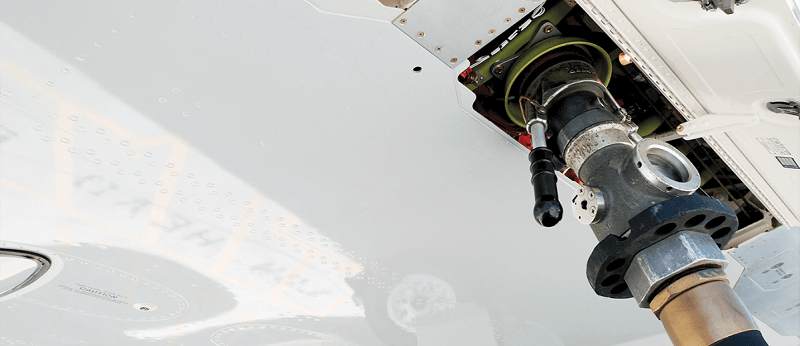April 4th, 2022 – the European Commission unveiled a significant set of legislative proposals under the “Fit for 55” package. This package intends to steer the EU to reach a bloc-wide GHG reduction target of 55% by 2030. Among the proposals was the long-awaited ReFuelEU Aviation Initiative: a first-ever blending obligation for sustainable aviation fuel (SAF). SkyNRG welcomes this mandate, which provides a solid basis for the industry to start investing. Tom Berg, Policy & Sustainability Manager at SkyNRG, summarizes the proposal and its implications.
- The proposal includes a blending obligation for fuel suppliers. Starting in 2025, the aviation fuel made available to EU airports should contain 2% SAF, increasing to 5% by 2030, 32% by 2040 and 63% by 2050.
- To provide the necessary level of market certainty for synthetic aviation fuels (also referred to as e-kerosene), the Commission proposes a sub-mandate for synthetic aviation fuel, starting at 0.7% in 2030, increasing to 8% in 2040 and 28% in 2050.
- The other SAF volumes will need to be produced from feedstocks listed in Part A and B of RED II Annex IX. This means that effectively there will two mandates: one for advanced biofuels and one for synthetic aviation fuels. The Impact Assessment projects these SAF mandates can be mostly fulfilled with EU production, importing just 5% of aviation fuel demand.
- The Commission recognizes that, in the short term, the supply of SAF from waste oils and fats, like those produced in SkyNRG’s SAF production plant DSL-01, will be essential to kick-start the SAF market. A limited (3.2%) shift of waste lipid feedstocks used for fuel production in the road transport sector to aviation is foreseen.
- Until 2035, fuel suppliers will not be required to supply the minimum amounts of SAF to airports physically. For compliance purposes, they are allowed to take an average share of SAF supplied to all EU airports. Fuel suppliers may trade SAF certificates from overachievers to underachievers.
- Besides putting an obligation on fuel suppliers, all airlines flying from (major) European Union airports must fuel 90% of their fuel demand for the next flight at that Union airport. This criterion has been integrated in the mandate to prevent that airlines fuel their planes at airports outside of the EU, resulting in a competitive disadvantage for European airports and a loophole for airlines to take climate action.
- To ensure that the SAF blending and uplifting obligations are met, the Commission defines criteria for non-compliance penalties. Member state authorities will propose penalties for fuel suppliers and airlines, but should adhere to these criteria:
- Fuel suppliers: At least twice the difference between the yearly average price of fossil jet fuel and SAF, times the amount of SAF required to meet the specified target. Separate penalties will apply to shortfalls in the advanced bio mandate and the synthetic fuel mandate. Based on SkyNRG analysis, non-compliance penalties in 2030 could be around €1,000 and €6,000 per tonne of fuel for the advanced bio and synthetic fuel mandates, respectively.
- Airlines: At least twice as high as the yearly average price of conventional jet fuel, multiplied by the quantity of SAF that has not been uplifted. Taking an average market price of €600 per ton of jet fuel, airlines could risk a penalty of €1,200 per ton of non-tanked SAF.
- EU member state authorities need to give notice of the installed penalties to the Commission by the end of 2023, which seems rather late to provide the necessary investment security for SAF producers. Also, paying these penalties does not exonerate fuel suppliers and airlines from meeting the obligations – the shortfall still has to be met in the subsequent reporting year.
- To mitigate the effects of tankering, the uplifting of more fuel than required for the flight for economic reasons, the proposal also includes a requirement for airlines to only tank the required amount for their subsequent flight. Because the “fuel required” data will likely be modeled by Eurocontrol, the requirement will be that airlines uplift at least 90% of the aviation fuel required at the airports they depart from.
- To avoid double-counting emission reductions, airlines may only claim the benefits of one batch of SAF once: under the EU ETS for intra-EU flights or under CORSIA for extra-EU flights.
The ReFuelEU Aviation Initiative is a comprehensive policy proposal containing the necessary foundations for long-term investment security in SAF. The proposed blending targets are ambitious, especially from 2030 onwards, and will require rapid investments in technologies not yet commercially ready to enable a wider sustainable feedstock pool. Gasification, alcohol-to-jet and e-fuel technologies will be needed at scale to meet the targets beyond 2030.
If you want to learn more on the ReFuel Aviation Initiative’s implications for the EU SAF market, keep an eye out for an in-depth supply/demand study we’ll be publishing soon. Stay tuned!



